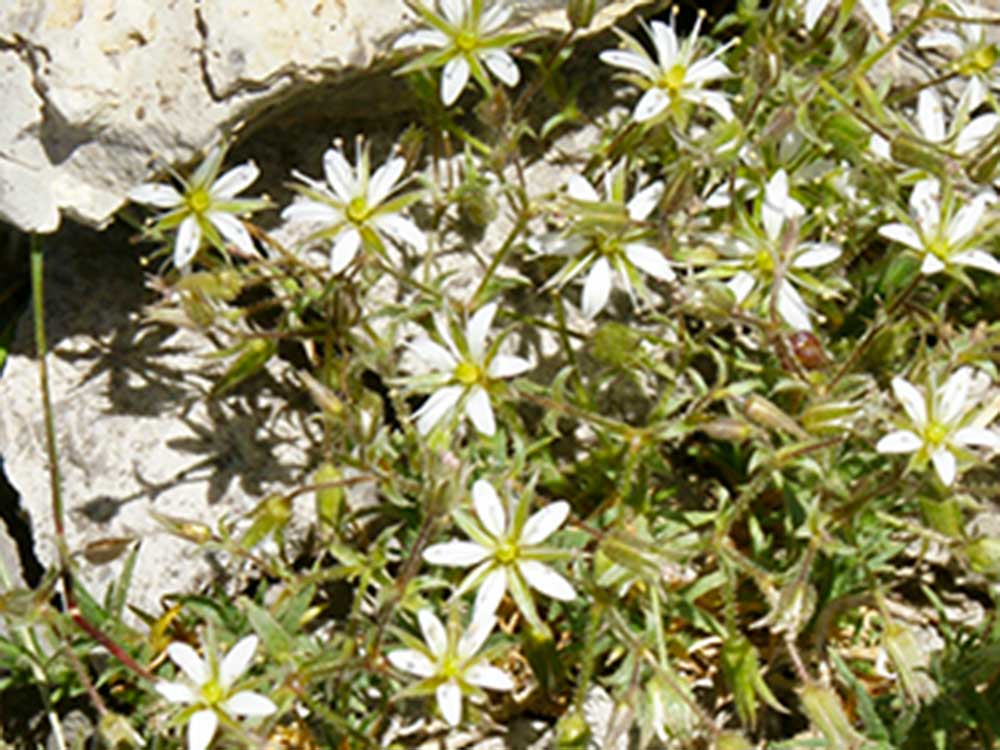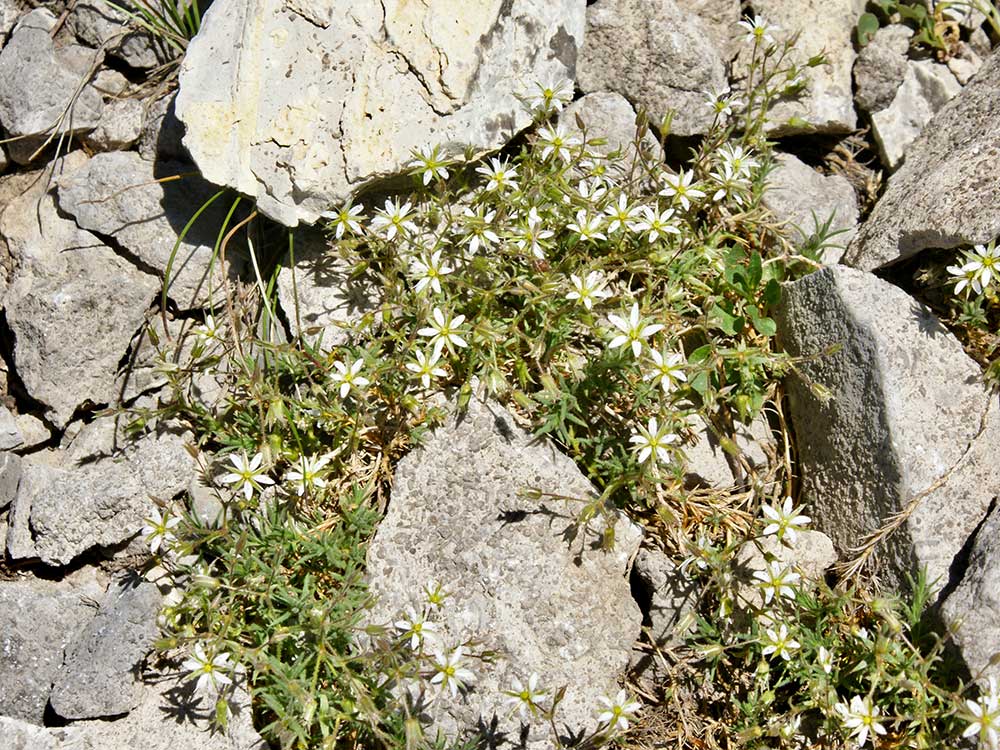Sabulina nuttallii / Nuttall’s sandwort
- small, glandular-pubescent perennial
- trailing stems form mats
- thin, rigid, needle-like leaves, about ½” long
- small, white, 5-petaled flowers in terminal clusters
- 5 green, pointy sepals
- sagebrush hills to alpine slopes, and especially on gravelly benches or talus
Synonyms: Arenaria nuttallii, Minuartia nuttallii, Minuopsis nuttallii
See also: Eremogene kingii / King’s sandwort.
Nuttall’s sandwort is a small, glandular-pubescent perennial, native to the Rocky Mountains and the Pacific Northwest, but also found as far south as Texas. It grows from a stout taproot and branched woody base, and the trailing stems form mats. It is also clonal, spreading by rhizomes. All these characters might be expected for a plant growing in harsh conditions, ranging from sagebrush hills to alpine slopes, and especially on gravelly benches or talus.
The leaves, like other sandworts, are opposite. Again suited to their habitat, they are thin and rigid, sometimes almost needlelike. They are only about ½” long and less than 1/16″ wide. Bundles of leaves also grow out the axils of primary leaves.
Nuttall’s sandwort flowers usually occur in groups of seven or more in terminal clusters. Each has 5 white petals and 5 sepals. The sepals are visible between the petals. The sepals, and sometimes the petals, are pointy. Each flower has 10 stamens and 3 styles.
Note: there are three other sandworts on this site and I would be hard pressed to guarantee this is not Eremogene kingii / King’s sandwort.
| Color | |
|---|---|
| Family | |
| Blossom size | |
| Inflorescence size | |
| Inflorescence type | |
| When? | |
| Where? |

